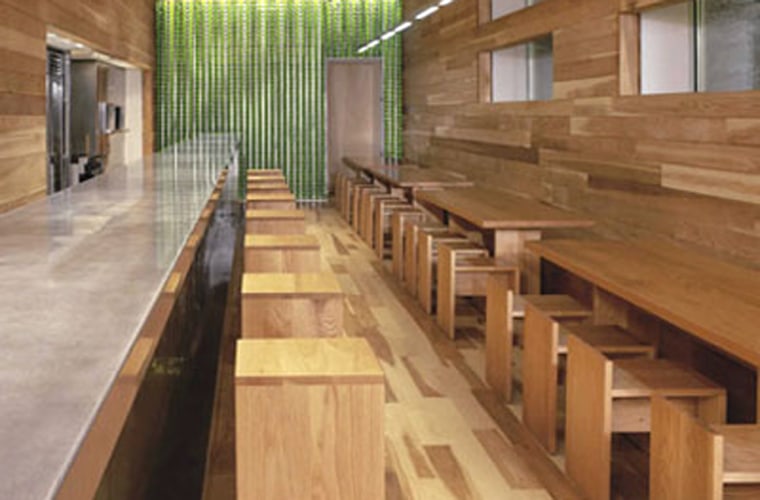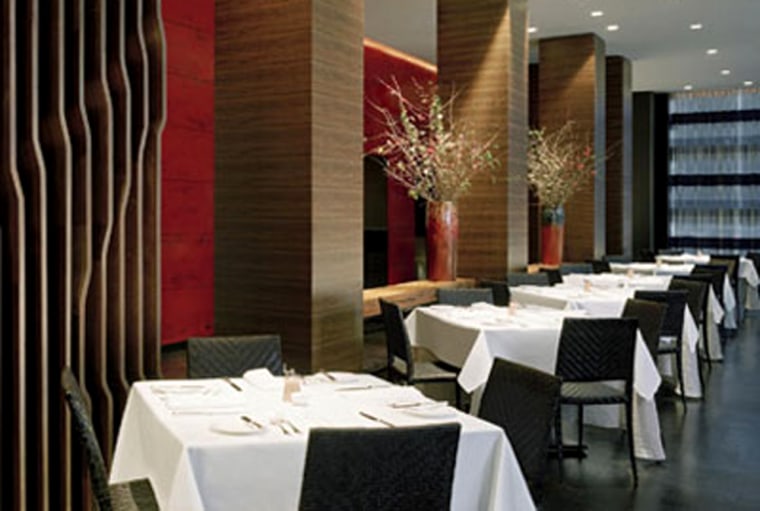Twenty years ago it would have been difficult to call more than a handful of American cities “great restaurant towns.” There were and of course, and , and were pretty exciting, too. But after that the list got lean with cities that had many good restaurants, but not enough depth and innovation in fine dining, and not enough breadth in ethnic and regional food categories.
Today, however, most major cities in the U.S. have the kind of gastronomic diversity and regionality that is rich in every department, and even if you’ve visited recently, you can be sure that next time you go, there’ll be more new and enticing restaurants than you could possibly visit.
If only in numbers, New York still has the muscle for bragging rights, with more than 23,000 restaurants (most of them run-of-the-mill). More important, NYC attracts a vast number of national and international visitors — 35 million last year — who come with plenty of money and the intention of spending it at the city’s best-known restaurants, from grand French dining rooms like Daniel and Le Bernardin to notoriously out-of-the-way steakhouses like Peter Luger’s. And it is still the only city in America where lunch is taken seriously and can still be a two-hour affair. Indeed, The Four Seasons, which opened in 1959, was where the term “power lunch” was coined. It is also worth noting that the first U.S. city honored with a Michelin Red Guide from France was the Big Apple.
By breaking through the formality of dining out — most evident at Wolfgang Puck’s pizzeria-and-grill Spago — Los Angeles restaurants owned the 1980s, and the concept of California cuisine and casual chic had a tremendous effect on the way Americans — and later the world — would eat. As Michael McCarty, owner of the ground-breaking Franco-Southern Cal restaurant Michael’s in Monaco, said, “California cuisine wasn’t really about mini-vegetables and baby lamb; it was about style.”
But America’s great foodie town is San Francisco where, since its Barbary Coast days, Asian immigrants came to cook, bringing the West Coast a tantalizing and diverse Eastern food culture. Over in Berkeley, a former Montessori teacher named Alice Waters revolutionized American cooking by asking why cooking ingredients weren’t as good as in Europe, and Chez Panisse was born from that simple idea.
You’d think that Chicago’s Midwestern swagger would make it a meat- and-potatoes town, but as America’s most majestic, wide-open, best-designed city, it’s also central to American gastronomy, from innovations like the salad bar at R.J. Grunt’s and hip tapas bars like Café Ba-Ba-Reeba! to some of the best Mexican food in the U.S. at Topolobampo and Frontera Grill. It’s a lot more fun to eat out in Chi-town than almost anywhere else.
Hurricane Katrina wreaked enormous havoc on New Orleans’ restaurants, not so much by washing them away as by destroying their electricity and refrigeration for weeks, and by displacing their kitchen and service staffs far beyond the city limits. As Tom Fitzmorris in his New Orleans Menu newsletter has chronicled, the city is back to having about as many restaurants now open — close to 900 — as when Katrina hit. That so many have reopened is as much a testament to the people’s spirit as to their belief that good food offers strength and calms the soul so that they can, again, let the good times roll.

Ten years ago, would hardly rank among the top 30 cities in the U.S. for good food. But an explosion (in some cases implosion) of casinos in the late 1990s brought Sin City a whole new form of decadence in dauntingly expensive restaurants culled from other cities. Wolfgang Puck opened a Spago and other restaurants there, Emeril Lagasse a fish house, Piero Selvaggio a branch of Valentino’s, and others upped the culinary ante almost overnight. Then, two years ago, Steve Wynn changed the dynamic with city-based, original restaurants at his Wynn Las Vegas, including the very posh Alex and the extraordinary Italian ristorante Bartolotta.
It’s getting hard not to have a great meal anywhere in the U.S. Read on to find a ranked list of the best restaurant towns in the United States, and where to eat when you're visiting.
Rankings for the ten best restaurant cities in the U.S. are based on:
1. Overall number of restaurants above the fast food level.
2. Number of fine dining restaurants with national and international standing.
3. Solid representation of regional American food.
4. A wide segment of second-tier restaurants that would include seafood, steakhouses, and independently chef-owned restaurants.
5. Breadth and depth of ethnic restaurants, especially if the city has neighborhood such as a Chinatown.
6. A significant number of neigborhood restaurants where the locals tend to eat out regularly.
7. A well-traveled clientele that regards eating out in that city one of the real pleasures of going there.
Prices reflect an average three-course dinner for two before wine, tax and tip.
